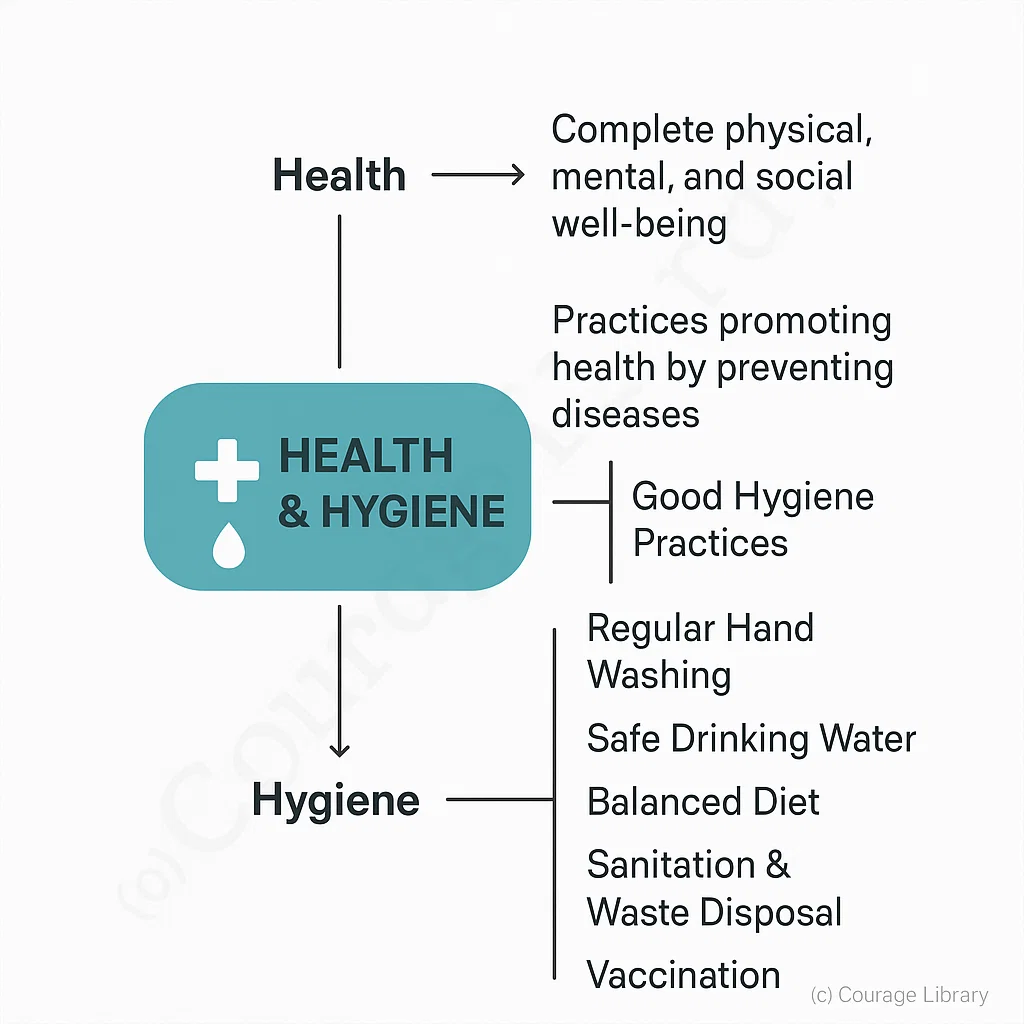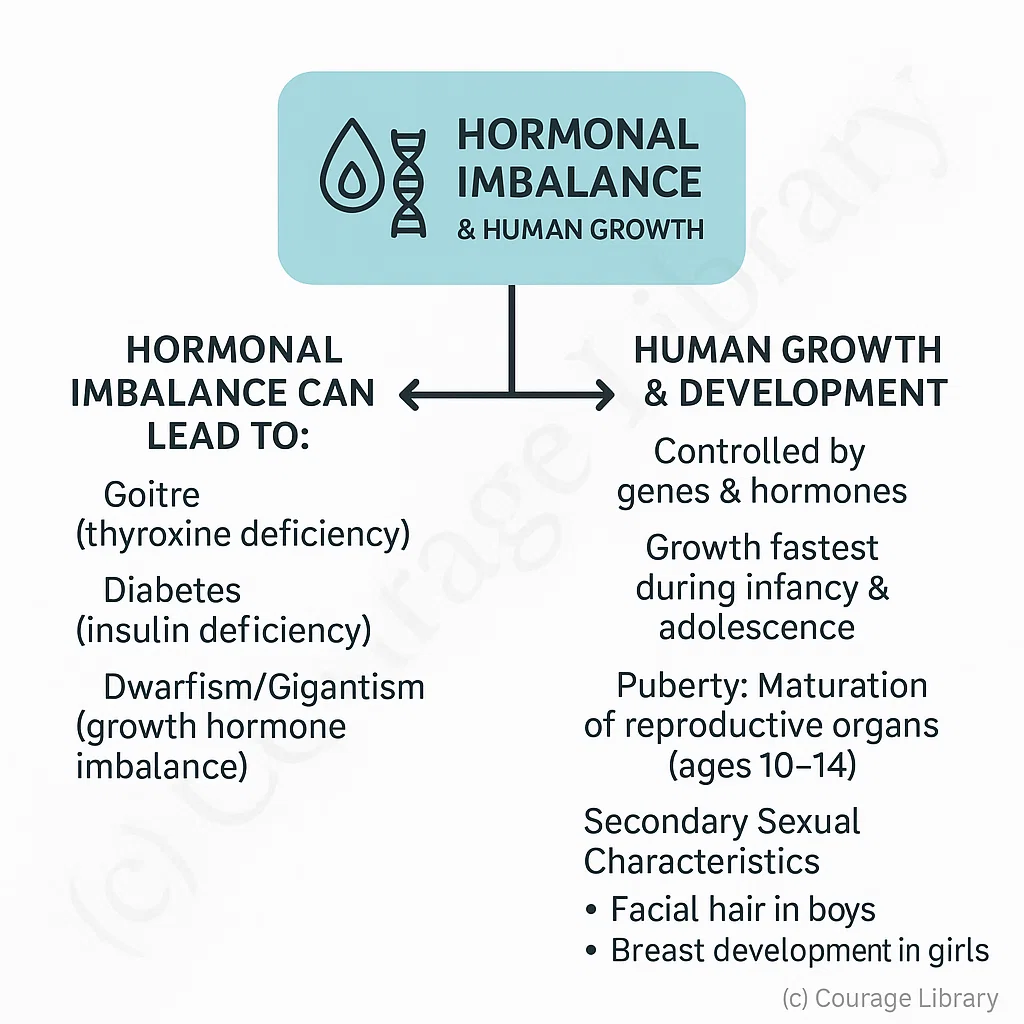SSC CGL - Detailed Guide 2025
Self-Paced Course

Biology in Daily Life
Connecting biological principles to day-to-day life
1. Nutrition, Health & Hygiene
A. Nutrition
Nutrition is the process by which living organisms obtain and utilize food for growth and maintenance.
Types of Nutrition:
| Type | Description | Example |
|---|---|---|
| Autotrophic | Organisms make their own food (photosynthesis) | Green plants |
| Heterotrophic | Organisms depend on others for food | Animals, humans |
Nutrients:
| Nutrient | Function | Sources |
|---|---|---|
| Carbohydrates | Energy | Rice, wheat, sugar |
| Proteins | Body building, repair | Pulses, eggs, meat |
| Fats | Energy storage, insulation | Oils, butter, nuts |
| Vitamins | Regulate body functions | Fruits, vegetables, milk |
| Minerals | Bone health, metabolism | Salt, spinach, banana, dairy |
| Water | Transport, temperature control | Drinking water, fruits |
| Roughage (Fiber) | Aids digestion, prevents constipation | Whole grains, green leafy vegetables |
Malnutrition:
| Condition | Deficiency | Symptoms |
|---|---|---|
| Kwashiorkor | Protein | Swollen belly, weakness |
| Marasmus | Protein + Calories | Emaciated body, growth retardation |
| Anemia | Iron | Fatigue, pale skin |
| Rickets | Vitamin D | Weak bones, bowed legs |
| Scurvy | Vitamin C | Bleeding gums, delayed wound healing |
| Night Blindness | Vitamin A | Poor night vision |
B. Health & Hygiene
- Health: A state of complete physical, mental, and social well-being
- Hygiene: Practices that promote health by preventing diseases
Good Hygiene Practices:
- Regular hand washing
- Safe drinking water
- Balanced diet
- Sanitation and waste disposal
- Vaccination

Preventive healthcare is more effective than curative.
2. Hormones & Human Growth
A. Hormones
Hormones are chemical messengers secreted by endocrine glands that regulate body functions.
| Gland | Hormone | Function |
|---|---|---|
| Pituitary | Growth hormone | Controls overall growth, regulates other glands |
| Thyroid | Thyroxine | Regulates metabolism, requires iodine |
| Pancreas | Insulin | Controls blood sugar level |
| Adrenal | Adrenaline | Emergency hormone — increases heart rate |
| Testes | Testosterone | Develops male reproductive features |
| Ovaries | Estrogen, Progesterone | Controls female reproductive system |

Hormonal imbalance can lead to:
- Goitre (thyroxine deficiency)
- Diabetes (insulin deficiency)
- Dwarfism/Gigantism (growth hormone imbalance)
B. Human Growth & Development
- Controlled by genes and hormones
- Growth is fastest during infancy and adolescence
- Puberty: Period when reproductive organs mature (around age 10–14)
- Secondary sexual characteristics appear (e.g., facial hair in boys, breast development in girls)
3. Agricultural Biology (GM Crops, Biofertilizers)
A. Genetically Modified (GM) Crops
GM crops are developed by altering the genetic material (DNA) of plants to introduce desirable traits.
| Feature | Benefit |
|---|---|
| Pest resistance | Reduces pesticide use |
| Drought tolerance | Grows in less water |
| Enhanced nutrition | Higher yield, vitamin content |
| Disease resistance | Less crop loss |
Example: BT Cotton — contains a bacterial gene that produces a toxin harmful to bollworm pest
Concerns: Environmental impact, resistance in pests, effects on biodiversity
B. Biofertilizers
Biofertilizers are living organisms that enrich the soil by fixing nutrients.
| Type | Function | Example |
|---|---|---|
| Nitrogen-fixing | Fix atmospheric nitrogen | Rhizobium (legume roots), Azotobacter |
| Phosphate-solubilizing | Converts insoluble phosphate to usable form | Pseudomonas |
| Cyanobacteria | Add organic matter, fix nitrogen | Anabaena, Nostoc |
Advantages:
- Environment-friendly
- Cost-effective
- Improve soil fertility
- Reduce chemical fertilizer use
Summary Points
- Nutrition, hygiene, and hormones directly impact human well-being.
- Understanding hormones helps explain changes during growth.
- GM crops and biofertilizers are essential for sustainable agriculture.
Master Biology Concepts with Us!
Join Courage Library for comprehensive study materials and expert guidance.
Be a Couragian!